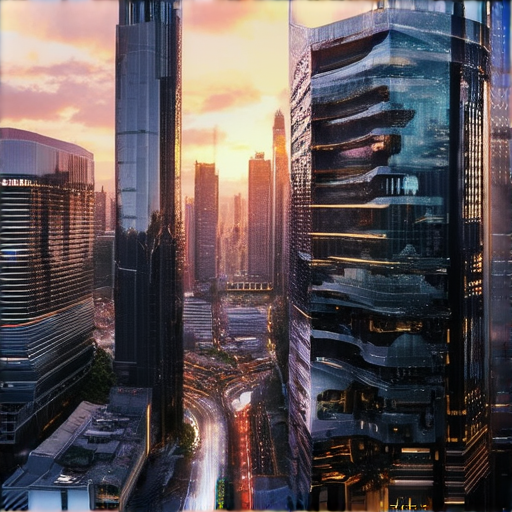As we step into the year 2024, the digital landscape continues to evolve at an unprecedented pace, presenting both opportunities and challenges for businesses looking to establish a strong online presence. With the ever-changing nature of consumer behavior and technological advancements, it’s essential for web designers to stay ahead of the curve by embracing the latest popular web design trends, which prioritize user experience, accessibility, and high-quality visuals.

The New Trend in Web Design
As we move into 2025, web designers are shifting towards a more intentional and refined approach to motion design.
- Purposeful animations and strategic 3D elements are becoming the norm, replacing excessive animation and 3D elements that dominated previous trends.
- This shift is driven by the need for a more streamlined and user-friendly online experience.
- Designers are focusing on creating a cohesive visual identity that enhances the overall user experience.
Trends to Watch:
-
Sustainable Design:
With the growing concern for environmental sustainability, web designers are incorporating eco-friendly materials and practices into their work. -
Accessibility-Focused Design:
As accessibility becomes increasingly important, designers are prioritizing inclusive design principles to ensure that websites are usable by everyone. -
Minimalism Revival:
Minimalist design is making a comeback, with a focus on clean lines, simple typography, and ample white space. -
Interactive Storytelling:
Web designers are experimenting with interactive storytelling techniques to engage users and convey complex information in a more immersive way.
Key Takeaways:
In conclusion, the new trend in web design emphasizes intentionality, refinement, and user-centricity.
By adopting these emerging trends, web designers can create more effective, accessible, and sustainable online experiences that meet the evolving needs of users.
At 119webdesign.com, we’re committed to staying ahead of the curve and providing expert insights to help you elevate your web design skills and stay ahead of the competition.
Discover the latest tips, tutorials, and trends in web design on our website, and let us help you unlock the full potential of your online presence.
The Future of Web Design in 2024
In web design, one of the most important trends set to make a significant impact in 2024 is responsive and mobile-first design.
-
Responsive and Mobile-First Design:
As the number of smartphone users continues to rise, it’s essential to ensure that your website provides a seamless user experience across various devices. -
Artificial Intelligence (AI) Integration:
AI-powered tools can help streamline web design processes, automate repetitive tasks, and enhance user engagement. -
Voice User Interface (VUI):
With the growing popularity of voice assistants, VUI design will become increasingly crucial for creating intuitive and conversational interfaces. -
Sustainable Web Design:
As consumers become more environmentally conscious, sustainable web design practices will gain momentum, focusing on eco-friendly materials, energy-efficient coding, and responsible digital waste management. -
Accessibility and Inclusive Design:
Web designers will prioritize accessibility features, such as high contrast modes, closed captions, and screen reader compatibility, to cater to diverse user needs. -
WebAssembly and Progressive Web Apps (PWAs):
These technologies will continue to shape the future of web development, enabling faster load times, offline capabilities, and native app-like experiences. -
AR and VR Integration:
Augmented reality (AR) and virtual reality (VR) will revolutionize web design, offering immersive experiences that blur the lines between physical and digital spaces. -
Content Management Systems (CMS) Evolution:
CMS platforms will adapt to emerging trends, incorporating AI-driven content creation, automated testing, and real-time analytics to enhance user experience and efficiency.
By embracing these cutting-edge trends, web designers can create innovative, user-centric, and future-proof designs that drive business success and leave a lasting impression on users.

Design Trends That Are Currently Trending
As we move forward in 2024, several design trends are gaining momentum.
-
1. Minimalism
Minimalist design continues to dominate various industries, including fashion, interior design, and digital media.
-
2. Sustainable Design
Sustainable design is becoming increasingly popular due to growing environmental concerns.
-
3. Neo-Brutalism
Neo-brutalist architecture combines brutalist elements with modern materials and techniques.
-
4. Biomimicry
Biomimicry involves designing structures and systems inspired by nature.
-
5. Parametric Design
Parametric design uses algorithms and mathematical equations to create complex shapes and forms.
-
6. Virtual Reality (VR)
Virtual reality technology is revolutionizing the way we interact with digital spaces.
-
7. Artificial Intelligence (AI)-Generated Art
Artificial intelligence-generated art is becoming increasingly prevalent in the creative industry.
-
8. 3D Printing
Three-dimensional printing technology allows for rapid prototyping and production of complex objects.
-
9. Geometric Shapes
Geometric shapes continue to play a significant role in modern design, particularly in graphic design and architecture.
-
10. Colorful Gradients
Colorful gradients are making a comeback in various design fields, including graphic design and UI/UX.
-
11. Asymmetrical Layouts
Asymmetrical layouts are becoming increasingly popular in graphic design and visual arts.
-
12. Hand-Drawn Illustrations
Hand-drawn illustrations continue to add a personal touch to various design projects.
-
13. Interactive Experiences
Interactive experiences are transforming the way we engage with digital content.
These design trends showcase the creativity and innovation that defines the design industry in 2024.

The 7 Cs of Effective Website Design
In today’s digital landscape, having a well-designed website is crucial for businesses looking to establish a strong online presence.
-
Context:
Understanding your target audience and tailoring your website to meet their needs is essential for creating a positive user experience. -
Commerce:
A seamless e-commerce experience can drive sales and revenue, making it a vital aspect of website design. -
Connection:
Building trust with your audience through transparent communication and a secure website is critical for long-term success. -
Communication:
Clear and concise messaging helps visitors quickly understand your brand’s value proposition and services offered. -
Content:
High-quality, engaging content keeps visitors engaged and informed, setting your website apart from competitors. -
Community:
Fostering a sense of community through social media integration, forums, or blog comments encourages user interaction and loyalty. -
Customization:
Providing personalized experiences through tailored content, recommendations, or offers enhances user satisfaction and increases conversions.
By incorporating these 7 Cs into your website design, you’ll be well on your way to creating a user-centric, engaging, and effective online presence that drives real results.
Best Practices for Implementing the 7 Cs
- Conduct thorough user research to inform your design decisions and tailor your website to meet the needs of your target audience.
- Invest in a robust e-commerce platform that provides a seamless checkout process and secure payment options.
- Implement transparent communication channels, such as live chat or email support, to build trust with your audience.
- Create clear and concise messaging that effectively communicates your brand’s value proposition and services offered.
- Prioritize high-quality, engaging content that resonates with your target audience and sets your website apart from competitors.
- Foster a sense of community through social media integration, forums, or blog comments to encourage user interaction and loyalty.
- Utilize customization techniques, such as personalized content or recommendations, to enhance user satisfaction and increase conversions.
Key Takeaways
By focusing on the 7 Cs of effective website design – Context, Commerce, Connection, Communication, Content, Community, and Customization – you’ll be able to create a user-centric, engaging, and effective online presence that drives real results.
Remember to conduct thorough user research, invest in a robust e-commerce platform, implement transparent communication channels, create clear and concise messaging, prioritize high-quality content, foster a sense of community, and utilize customization techniques to maximize the effectiveness of your website design.
The Five Golden Rules of a Well Designed Web Page
In today’s digital landscape, having a well-designed web page is crucial for capturing and retaining visitors’ attention. As a seasoned web designer, I’ve distilled the essential principles into five golden rules that guarantee a seamless user experience.
-
Rule 1: Ease of Navigation
A clutter-free and intuitive interface is vital for guiding users through your website. Implement a clear hierarchy of information, concise menu options, and prominent calls-to-action to facilitate effortless navigation.
- Use a consistent navigation pattern throughout your website.
- Make sure your menu options are concise and easily accessible.
- Utilize visual cues, such as icons or colors, to differentiate between primary and secondary actions.
-
Rule 2: Useful Original Content
Compelling content is the backbone of any successful website. Develop a content strategy that resonates with your target audience, incorporating high-quality visuals, engaging storytelling, and valuable insights.
- Conduct thorough market research to understand your audience’s needs and preferences.
- Create a content calendar to ensure consistency and efficiency.
- Invest in high-quality visuals, such as images and videos, to enhance engagement.
-
Rule 3: Layout Consistency
A well-designed layout is essential for creating a cohesive and professional look. Establish a consistent grid system, typography, and color scheme to maintain visual harmony throughout your website.
- Develop a comprehensive style guide to ensure consistency across your website.
- Choose a typography hierarchy that effectively communicates your message.
- Use a limited color palette to create a visually appealing and recognizable brand identity.
-
Rule 4: Responsive Design
A responsive design ensures that your website adapts seamlessly to various devices and screen sizes, providing an optimal user experience regardless of how users access your site.
- Use a flexible grid system to accommodate different screen resolutions.
- Implement media queries to adjust layout and styling based on device type and orientation.
- Test your website on various devices and browsers to ensure compatibility.
-
Rule 5: Easy-to-Memorize URLs
A well-crafted URL structure can significantly impact your website’s usability and search engine optimization (SEO). Use descriptive and concise URLs that accurately reflect your content’s purpose.
- Use a logical and hierarchical URL structure.
- Avoid unnecessary parameters and query strings.
- Use descriptive and keyword-rich URLs to improve SEO.
By adhering to these five golden rules, you’ll be well on your way to creating a well-designed web page that captivates and engages your audience, driving long-term success for your online presence.

The 7 Major Steps to Designing a Website
As a professional web designer, I’ve broken down the process into seven manageable steps to ensure a successful project.
-
Define Project Goals and Objectives
- Determine the purpose of the website
- Identify target audience and their needs
- Establish key performance indicators (KPIs)
- Create a rough wireframe of the website’s layout
-
Conduct Research and Analysis
- Research competitors and industry trends
- Analyze market conditions and consumer behavior
- Evaluate existing branding and marketing materials
- Develop a unique selling proposition (USP)
-
Create a Visual Identity
- Design a logo and color scheme
- Develop typography and imagery guidelines
- Create a style guide for consistency
- Establish a brand voice and tone
-
Plan the Information Architecture
- Organize content into clear categories
- Create a sitemap and navigation menu
- Develop a content strategy and plan
- Establish a taxonomy and metadata system
-
Design the User Experience (UX)
- Create wireframes and prototypes
- Develop interactive designs and mockups
- Test and iterate based on user feedback
- Refine the design for accessibility and usability
-
Build and Launch the Website
- Select a Content Management System (CMS)
- Choose a development framework and tools
- Write clean, efficient code and test thoroughly
- Launch the website and conduct quality assurance
-
Maintain and Improve the Website
- Monitor analytics and track KPIs
- Perform regular updates and maintenance
- Optimize the website for search engines
- Continuously gather user feedback and iterate

0 Comments